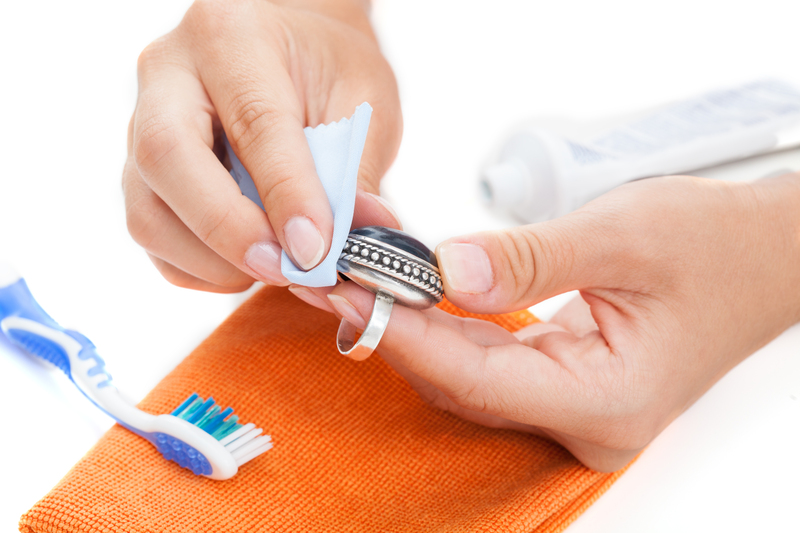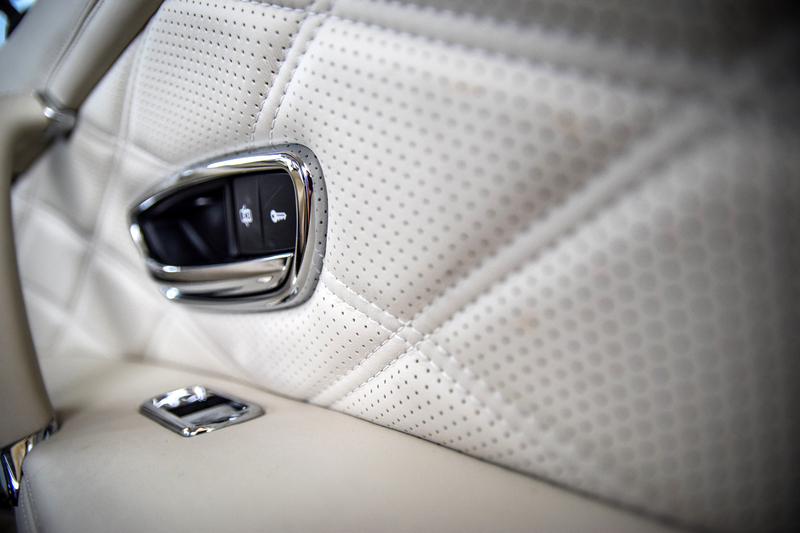Expert Tips for a Home Free of Dust and Allergens
Posted on 22/08/2025
Expert Tips for a Home Free of Dust and Allergens
Are you searching for ways to maintain a dust-free and allergen-proof home? Allergens and dust are notorious for causing discomfort, allergies, and even chronic respiratory issues. In this comprehensive guide, we cover practical and effective expert tips for keeping your home clean and healthy, so you and your family can breathe easy every day.

Why Is Controlling Dust and Allergens Important?
Dust and allergens can lurk in the most unexpected places in your house. From pet dander and pollen to dust mites and mold spores, these invisible invaders can trigger allergic reactions and worsen conditions like asthma. A clean, allergen-free home isn't just about appearances--it's critical for health and wellness.
- Dust and allergens can cause sneezing, coughing, and itchy eyes
- They often aggravate asthma and other respiratory conditions
- Children and elderly family members are especially vulnerable
- Regular cleaning reduces their presence significantly
Understanding the Main Sources of Household Dust and Allergens
Identifying the primary sources of dust and allergens is the first step to controlling them. Knowing where these particles originate allows you to take strategic action to reduce their accumulation.
Common Sources Include:
- Textiles such as carpets, curtains, upholstery, and bedding
- Pet fur and dander
- Outdoor pollen and mold spores entering through doors and windows
- Dead skin cells and hair
- Household cleaning products and their residues
- HVAC systems and dirty filters
Practical & Effective Tips to Minimize Dust and Allergens at Home
1. Establish a Consistent Cleaning Routine
A regular cleaning schedule is the cornerstone of a dust-free home. Frequency is essential; dust can accumulate quickly, especially in high-traffic areas.
- Vacuum at least twice a week, focusing on carpets, rugs, and furniture
- Dust all surfaces with a damp cloth to trap and remove particles
- Don't forget baseboards, light fixtures, and shelves
2. Use High-Efficiency Filtration Vacuum Cleaners
Invest in a vacuum with a HEPA (High-Efficiency Particulate Air) filter. These filters capture tiny particles, including dust mites and allergens, ensuring they aren't released back into your living space.
- Clean or replace the filter periodically
- Select vacuums that work on both hard floors and carpets
- Empty the vacuum canister outside the house for extra protection
3. Wash Bedding and Fabrics Regularly
Bedding, pillowcases, and blankets are hotspots for dust mites and allergens. Get into the habit of laundering these items at least once a week using hot water.
- Use allergy-proof covers for pillows and mattresses
- Choose washable curtains and clean them seasonally
- Limit decorative pillows and plush toys in sleeping areas
4. Control Indoor Humidity Levels
Maintaining an optimal humidity level--ideally between 30% and 50%--inhibits the growth of dust mites and mold.
- Use a dehumidifier in damp rooms like basements and bathrooms
- Ventilate your home by opening windows and using exhaust fans
- Monitor humidity with an affordable hygrometer
5. Eliminate or Minimize Carpeting
Carpets are major reservoirs for dust and household allergens. Whenever possible, opt for hard flooring such as wood, tile, or laminate.
- If carpets are a must, select low-pile options
- Routinely clean carpets with steam or professional services
- Use washable rugs and clean them frequently
6. Choose Allergen-Resistant Home Furnishings
Opt for furniture and home decor items made of smooth, easy-to-clean materials, such as leather, plastic, or metal. For soft furnishings, pick those that are easily washable.
- Avoid heavy drapes and upholstered furniture
- Clean furniture regularly with appropriate cleaners
7. Keep Pets Clean and Groomed
Our furry friends can contribute significantly to indoor allergen levels. Regular grooming and bathing can drastically reduce pet dander, fur, and even pollen they might bring in from outside.
- Brush pets outdoors to prevent fur from spreading indoors
- Bathe pets according to veterinary recommendations
- Wash pet bedding, toys, and blankets weekly
8. Don't Overlook Air Quality Appliances
Consider investing in air purifiers equipped with HEPA filters. These smart devices can remove particles as small as 0.3 microns, trapping dust, pollen, and pet dander from your indoor environment.
- Place air purifiers in bedrooms and other high-traffic areas
- Ensure regular filter changes for effectiveness
9. Maintain Your HVAC System
Your heating, ventilation, and air conditioning (HVAC) system can circulate dust and allergens if not properly maintained.
- Change HVAC filters every 2-3 months
- Opt for high-efficiency filters when possible
- Schedule professional duct cleaning every few years
- Ensure vents and air returns are unobstructed and clean
10. Embrace Minimalism: Declutter Regularly
Clutter offers more surfaces for dust to settle. By keeping your spaces organized and free from unnecessary items, you'll significantly reduce hidden dust reservoirs.
- Store items in closed cabinets or containers
- Donate or recycle unused belongings
- Display only what you truly love or need
Natural & Non-Toxic Cleaning Solutions
Avoid harsh cleaning products that could introduce additional allergens or irritants to your home. Instead, opt for natural or eco-friendly options whenever possible.
- White vinegar, baking soda, and lemon make excellent natural cleaners
- Opt for fragrance-free and dye-free commercial cleaning products
- Steam cleaning is highly effective for flooring and upholstery
Room-by-Room Guide to Maintaining a Dust-Free Home
Living Room
- Dust electronics, window sills, and shelves regularly
- Wash or vacuum curtains and blinds routinely
- Keep windows closed during high-pollen seasons
Bedrooms
- Use allergen-proof bedding and wash it weekly
- Remove unnecessary decor and stuffed animals
- Vacuum under the bed and behind furniture
Kitchen
- Minimize fabric-based mats and install smooth flooring
- Wipe countertops and cabinet surfaces daily
- Ensure good ventilation to prevent mold
Bathrooms
- Use exhaust fans during and after showers to limit moisture
- Wash bath mats and towels weekly
- Check for leaks and signs of mold regularly
Entryways
- Use high-quality doormats both outside and inside doors
- Ask guests and family to remove shoes before entering
- Vacuum or mop floors frequently in high-traffic zones
Frequently Asked Questions About Reducing Home Dust and Allergens
How Often Should I Clean to Keep My Home Allergen-Free?
Consistency is key. Aim for weekly cleaning routines for high-contact surfaces, bedding, and floors. High-traffic households or those with pets may require more frequent maintenance.
Are Air Purifiers Worth the Investment?
Studies show that high-quality HEPA air purifiers can significantly improve indoor air quality by trapping dust, dander, and pollen--especially effective in bedrooms and nurseries where allergens might otherwise collect.
Which Plants Help Reduce Allergens Indoors?
Certain houseplants, such as spider plants, peace lilies, and snake plants, can help filter air pollutants. Ensure plants are cared for properly to prevent mold growth in the soil.

Extra Pro Tips for a Truly Clean and Allergen-Free Home
- Leave shoes at the door to prevent outdoor allergens from spreading inside
- Install air-tight window and door seals to reduce dust and pollen entry
- Use microfiber cleaning cloths, which trap more dust than cotton
- Keep closets organized and doors closed to prevent dust build-up
- Consider regular professional cleaning for deep allergen control
Conclusion: Achieve a Clean, Allergen-Free Living Space
Creating a home free of dust and allergens may seem challenging, but with expert-proven strategies and regular upkeep, you can maintain a safe and comfortable environment for everyone. Whether you're looking to reduce allergy symptoms or simply want a sparkling, healthier home, these tips will set you on the path to success. Breathe easier, sleep better, and thrive in a truly clean home!
Don't wait--start integrating these expert cleaning tips and dust-busting techniques today for lasting relief and a healthier family lifestyle.



